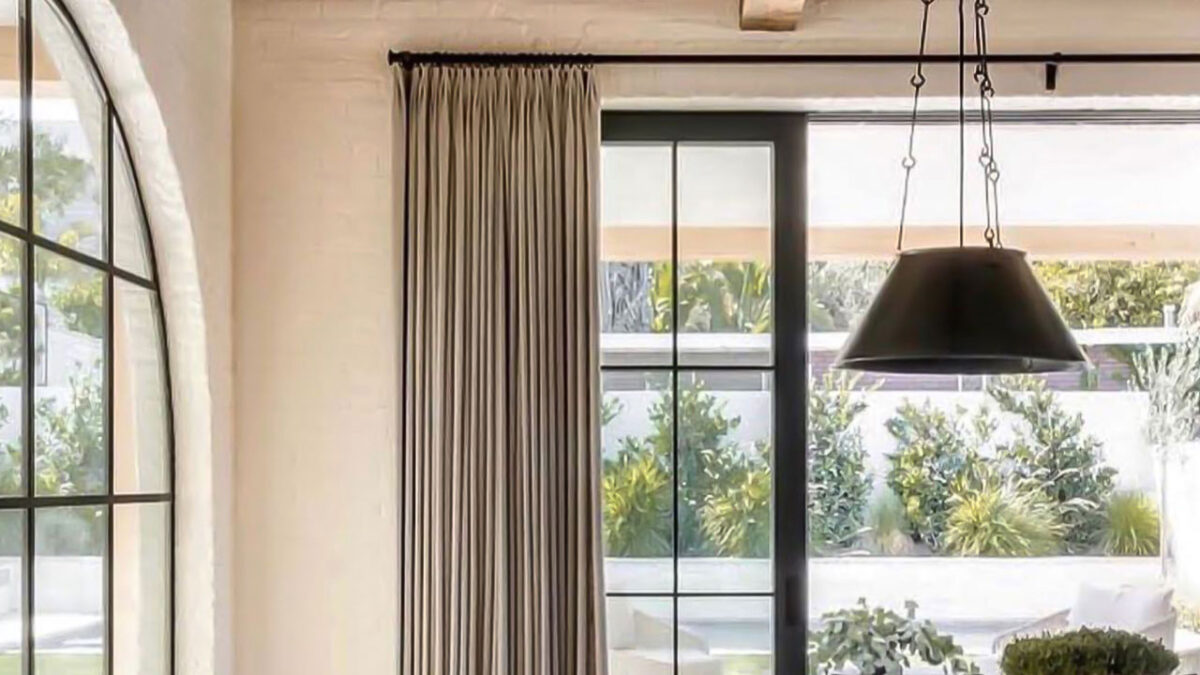In the realm of modern architectural design, curtain wall systems have emerged as a cornerstone in promoting natural light, enhancing aesthetic appeal, and boosting energy efficiency in both commercial and residential buildings. These systems, acting as the building’s exterior walls, replace traditional solid walls with glass panels, offering unobstructed views and a flood of natural lighting.
In this comprehensive guide, we’ll take a closer look at the symbiotic relationship between curtain wall picture windows and natural light, underscoring their significance in today’s building industry.
The Role of Curtain Wall Systems
A curtain wall serves as a non-structural, glass wall that hangs like a picture wall from the structural frame of the building, typically composed of lightweight materials. Unlike standard exterior materials, the primary material of curtain wall systems is glass, enabling a seamless interface between the interior and the natural environment. These systems are not only a popular choice for high-rise buildings but also for any structure aiming to enhance its aesthetic expressions and energy performance.
Impact on Natural Light and Energy Efficiency
Curtain wall windows play a pivotal role in harnessing natural light, reducing the need for artificial lighting and thereby lowering energy consumption and costs. The strategic use of glass panels, including options like north-facing windows and south-facing windows, allows for the optimization of natural lighting based on building orientation, contributing significantly to a building’s energy efficiency standards.
Thermal Performance and Building Comfort
The integration of advanced glass technologies in curtain wall systems, such as low-E coatings and insulated glass units, ensures that while natural light is maximized, thermal performance is not compromised. This balance between light penetration and temperature control is key to maintaining comfortable interior conditions and supporting occupants’ circadian rhythm without incurring high energy costs.
Design Flexibility and Aesthetic Appeal
Curtain walls offer unparalleled design flexibility, allowing architects to create unique building facades that reflect contemporary aesthetic expressions. From floor slabs to concrete slabs, these systems can span slab to slab, providing a sleek and pleasing building appearance.
Furthermore, features like operable windows can be integrated within curtain wall systems, marrying modern systems’ functionality with traditional operable original windows for improved air quality and user control.
Considerations for Building Owners and Management
Building owners and managers must consider various factors when implementing curtain wall systems. This includes assessing the structural load, ensuring the structural integrity of the building, and selecting the appropriate exterior materials that align with the architectural design and building envelope requirements.
Additionally, understanding the impact of different orientations and the benefits of incorporating features like spandrel panels to hide structural components is crucial for effective design.
Maximizing Natural Light in Your Space with Curtain Wall Windows
1. Optimize Building Orientation
Building orientation plays a crucial role in natural light optimization. For new constructions, position your building to take advantage of north-facing windows and south-facing windows, which provide consistent natural lighting while minimizing direct sun exposure and heat gain. This strategic placement enhances the thermal performance of curtain wall systems and reduces energy consumption from artificial lighting and cooling.
2. Select the Right Glass Panels
The choice of glass is pivotal in curtain wall systems. Opt for glass panels that offer a balance between light transmittance and energy efficiency. Consider using low-emission (low-E) coated glass, which reduces energy cost by minimizing heat transfer while allowing ample visible light to pass through. Additionally, integrating spandrel panels with vision glass can ensure privacy without compromising natural lighting.
3. Utilize Lightweight Materials
Incorporate lightweight materials in the curtain wall frame and structural components to support larger glass areas without compromising structural integrity. Aluminum frames, for instance, are a popular choice due to their strength and flexibility, enabling wider expanses of unobstructed views and maximum natural light penetration.
4. Incorporate Operable Windows
While curtain walls are primarily fixed, incorporating operable windows can enhance natural ventilation, reducing the reliance on artificial climate control systems. This can also allow occupants to control the amount of natural light entering the space, contributing to energy savings and improving the indoor environmental quality.
5. Leverage Building Facades
Design building facades with curtain wall systems that extend from slab to slab, maximizing the surface area for natural lighting. Consider the use of exterior materials and architectural design elements that reflect light into darker areas of the building, enhancing overall illumination without additional energy usage.
6. Implement Smart Glass Technologies
Modern systems now offer smart glass or dynamic glass technologies, allowing the glass to change its tint based on sunlight exposure. This can significantly reduce glare and heat gain while maintaining high levels of natural lighting, promoting energy efficiency and occupant comfort.
7. Maximize Thermal Performance
Ensure that the curtain wall assembly is designed for optimal thermal performance. Utilize insulated glass units and ensure proper sealing between floor slabs and the curtain wall to minimize energy loss. This enhances the building envelope’s efficiency, reducing the need for artificial lighting and heating.
8. Embrace Aesthetic Expressions
Use curtain walls as aesthetic expressions in your architectural design. They can serve as picture walls, providing unobstructed views that connect indoor spaces with the outdoor environment. This not only maximizes natural light but also adds to the pleasing building aesthetics, making it a popular choice in the building industry.
Illuminate Your Space with Euroline Steel Windows
Curtain wall windows offer an effective solution for maximizing natural light while maintaining energy efficiency and structural integrity. By following these tips, building owners and managers can enhance the natural lighting of their properties, leading to reduced energy costs, improved occupant comfort, and a more sustainable building management approach.
Discover the perfect synergy of style, performance, and natural light with Euroline Steel Windows. Elevate your curtain wall design and embrace the benefits of enhanced natural lighting. Contact us today to find out how our steel windows can transform your architectural project.

